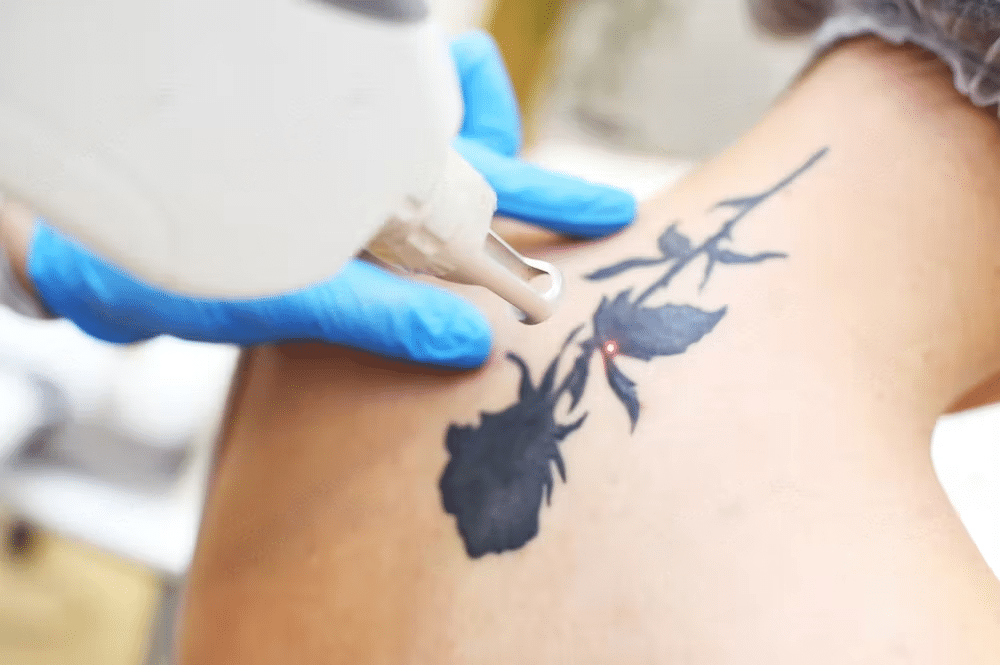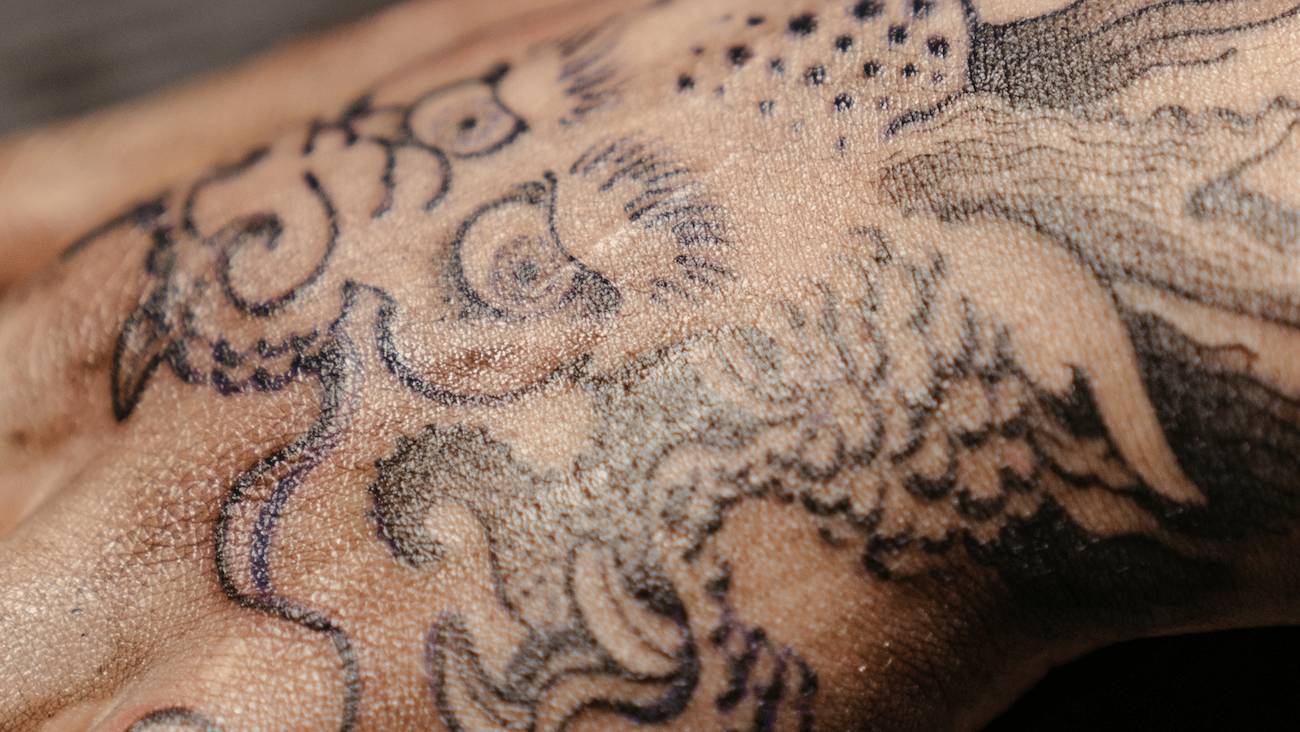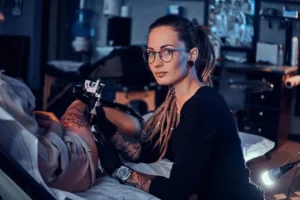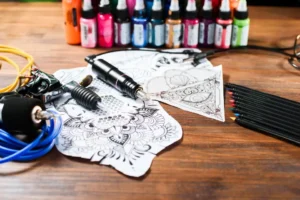How Many Sessions To Remove Tattoo | How Long Does It Take

When considering getting a tattoo removed, it is important to seek out professional services.
People who opt for professional assistance receive their natural skin back after a successful procedure, removing all traces of the original tattoo. Your tattoo removal can be done quickly and easily with the appropriate tools and our professionals on hand.
What Are My Removal Options?
Many clients are curious about their alternatives for tattoo removal. Although there are a number of treatments, laser tattoo removal is frequently regarded as the finest. This is due to how quick and safe it is. The possibility that your skin will remain intact following laser removal is highest. This is wonderful news if you want to get rid of a tattoo without damaging your skin.
There are choices if you still wish to learn more about other treatment options. A chemical peel, conventional dermabrasion, and surgical excision are a few of these substitute treatments. They have the potential to be invasive and create scars. This is why traditional laser removal of tattoos is usually the first choice clients make.
Discover How Many Tattoo Removal Treatments You Would Need To Completely Remove Your Tattoo

How many treatments are required to erase a tattoo is another common concern. This depends on the tattoo’s nature, size, location, colour, intensity, and age. It also depends on where it is located. Without speaking with one of our specialists first, it might be difficult to determine how many sessions are required, given all these circumstances.
The majority of tattoos require five to ten sessions. While smaller tattoos may only require five sessions, larger tattoos may require up to ten.
The Health Of The Client
Clients in better health will require fewer appointments to have their tattoos removed. Some customers have improved their health-related behaviours, and as a result, their skin is healthier. This facilitates laser therapy and, naturally, speeds up ink removal.
The laser therapy could take a little longer for elderly patients, smokers, or people who aren’t in the best of condition. This does not imply that laser tattoo removal is not possible. The customer might require one or two additional sessions to have the tattoo removed.
The Ink Used
The number of sessions the customer needs may vary depending on the type of ink utilised. It will also depend on how much ink and dark it is. The fact that tattoo ink is unregulated must be made clear to clients. There are superior and inferior inks.
Every tattoo artist you go to may use a different kind of ink. There are many different ink types because there is no standard. As a result, the time it takes to remove the ink varies. Your specialist can determine the number of sessions required based on the type of tattoo on your skin.
The Age Of The Tattoo
The older the tattoo, the easier it is to get rid of. Older tattoos have had more time to fade as the body gets rid of the ink naturally. It takes a long time for this to happen slowly. That does, however, explain why a tattoo that is 50 years old compared to a new tattoo appears faded.
Types Of Lasers Used In Tattoo Removal Sessions
For this procedure, Q-switched lasers are more commonly used. They are popular for being the most effective at getting rid of tattoos. Q-switched lasers include, among others, the following:
- Alma SINON Q-switched Ruby laser
- Jeisys Tri-Beam
- Cynosure RevLite
- Syneron Candela PicoWay
Cynosure RevLite
With Cynosure RevLite, the tattoo is removed using a red 650 nm wavelength. This method will remove the tattoo without damaging the skin or leaving reddening or swelling. The recovery time is much shorter than other methods, and the healing is faster.
Jeisys Tri-Beam
This Jeisys Tri-Beam laser is used to deliver energy in brief and nanosecond pulses at several wavelengths. As a result, the risk to nearby tissue is reduced, while the laser can be employed to target undesirable pigment molecules. It efficiently removes the ink from tattoos without causing skin damage.
In addition to removing tattoos, this laser can help lighten and improve various skin pigmentations. Melasma, age spots, and sun spots are examples of this. Because it can be used on any type of skin and doesn’t require any downtime, this laser is the one that is most frequently used to remove tattoos.
Syneron Candela PicoWay
With this Syneron Candela PicoWay laser, compared to conventional laser treatments, undesired tattoos can be removed in fewer sessions. This occurs as a result of the laser’s ability to target specific ink with concentrated energy delivered in faster, shorter bursts that are measured in picoseconds. Compared to other laser treatments, this is far faster.
These brief bursts will ensure that the tattoo’s ink is split up into small fragments, enabling the body’s natural mechanisms to remove the pigment. All skin types can benefit from this laser procedure, and it removes tattoos of a variety of colours.
Conclusion
Although laser tattoo removal and cover-up sessions appear equally popular, getting a tattoo removed before getting a new one allows you to start over without limitations.
After reading this guide, you now know the best ways to remove your tattoo and how many sessions it would take to fully remove it. Your skin should appear clear and unaltered once all of the ink molecules from your previous tattoo have been dissolved and eliminated from your body.
FAQ
Can I do a tattoo removal session every two weeks?
The process does do some damage to the tissue, which means that healing time is essential. Most laser removal technicians recommend sessions spread out in at least four-week intervals. Some even suggest 5 to 8 weeks between laser sessions.
Are black tattoos easy to remove?
Black tattoos are the easiest to remove because the laser can target the black pigment more precisely. Other colours, such as red, blues, and greens, can become more difficult to remove depending on whether the tattoos are amateur or professional. Green is the hardest colour to remove, followed by light blue.
Does tattoo removal leave scars?
How you treat your skin and its condition affects tattoo removal as much as when you got the tattoo. Though most people find little to no scarring from the process, it does happen. More frequently occurring in those with darker skin tones, scarring can occur due to a loss of pigmentation.




